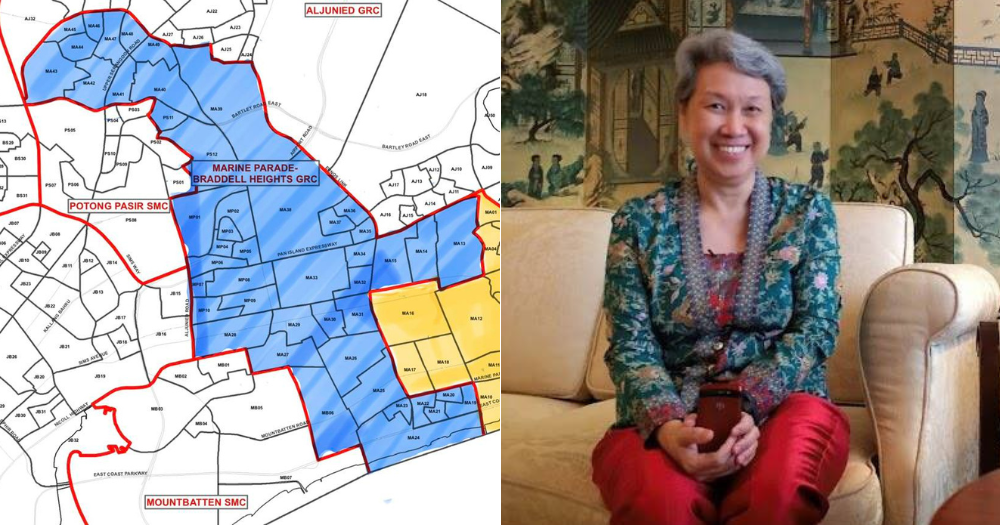Ho Ching explains electoral boundary changes, says accusers of gerrymandering are 'playing the victim card'
Sometimes, the boundaries have to take into account different land uses.
Hannah Martens
October 11, 2025, 04:56 PM
https://bit.ly/3qgqzHg
Wife of Senior Minister Lee Hsien Loong, Ho Ching, has aired her thoughts on drawing election boundaries, outlining the key reason as ensuring "every voter's vote counts equally to others".
In a
Facebook post on Oct. 11, Ho used Japan as an example, noting that districts with lower populations still have the same number of parliamentary representatives.
However, Singapore "anticipates and adjust" the electoral boundaries so that there are approximately the same number of voters per Member of Parliament (MP).
Geography
Ho pointed out that some places appear larger geographically, but upon closer inspection, may include land occupied by Singapore Armed Forces training areas, reservoirs, nature reserves, or airports.
Other times, boundaries might be drawn according to divides like major highways or rivers.
Thus, the range of voters per MP would range from about 20,000 to about 30,000.
She added that new housing estates also mean adjusting adjacent electoral districts.
Other times, the adjustment is made pre-emptively, if the district will soon see major population increases as new estates receive new residents.
"At other times, the adjustments are made later, delayed by one electoral cycle, for example, so as to wait for more downstream changes in the adjacent electoral districts before making a move."
Accusations
Ho then mentioned districts like Potong Pasir, which have remained "untouched" for a long time because the population had not grown. This is so for the Hougang voting district too.
"Ironically, this was likely the effort not to be accused of gerrymandering," said Ho.
She then pointed out that with new housing rapidly coming up, the Potong Pasir boundaries were shifted in recent elections to adjust to the ideal number of 30,000 voters per MP.
"Similarly, Sengkang was carved out as new voting GRC - to be won by Workers' Party (WP)," said Ho.
She also highlighted examples of new GRCs being carved out of existing ones in the North, and other GRCs, like Bukit Timah and Kranji, where land is being developed for housing.
"These changes will continue with each election cycle, as new housing comes up in various areas. The overall number of MPs have also increased over the years too, as our overall voter population grew," Ho said.
"So, all these accusations of gerrymandering are really playing the victim card, unworthy of true leadership with integrity."
Ho then added that Singaporeans in general are always willing to stand up for the underdog, but she cautioned against going "to the extreme of pampering crybabies."
2025 Electoral Boundaries Review Committee report
Earlier in Mar. 11, 2025, the Electoral Boundaries Review Committee (EBRC) released its report ahead of the 2025 General Elections.
The EBRC is convened before each General Election to review Singapore's electoral map.
They will then make recommendations on the number and boundaries of GRCs and SMCs.
According to the Elections Department, the review takes into account changes in housing development and population shifts.
Previous committees worked on the basis of having about 20,000 to 38,000 electors per MP.
The EBRC's review is also guided by specific terms of reference.
This year, Prime Minister Lawrence Wong asked the EBRC to "seek to keep the average size of GRCs, the proportion of MPs elected from SMCs, and the average ratio of electors to elected MPs, all at about the same as that in the last General Election".
Following the release of the report, opposition parties WP and the Progress Singapore Party commented on the changes.
WP noted that the report contained "significant changes" in the boundaries, while PSP said that much of the EBRC's decision-making remains "unexplained".
WP's chief Pritam Singh also questioned the fairness of the changes on Mar. 25, 2025.
In a Facebook post on Mar. 25, Singh highlighted the public’s response, particularly among young Singaporeans, questioning the fairness of the committee's changes.
Singh’s post referenced a parliamentary debate where a PAP intervention dismissed concerns about the process by stating that gerrymandering happens in Western democracies too.
Noting that the most recent EBRC report cited “population growth” as the primary reason for what he described as "one of the most radical redrawing of electoral boundaries in recent memory", Singh questioned the rationale behind these changes, emphasising the importance of transparency in electoral processes.




